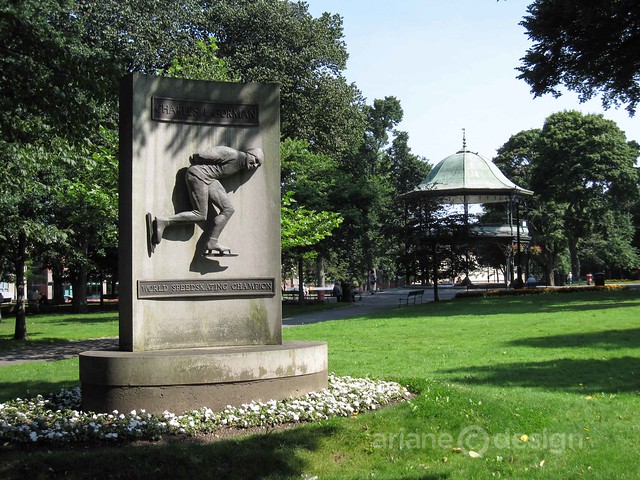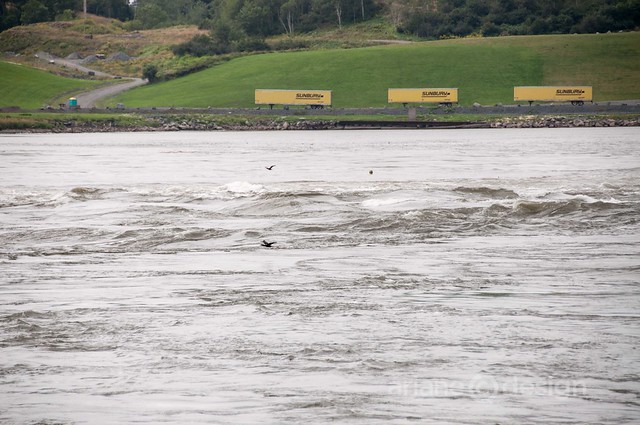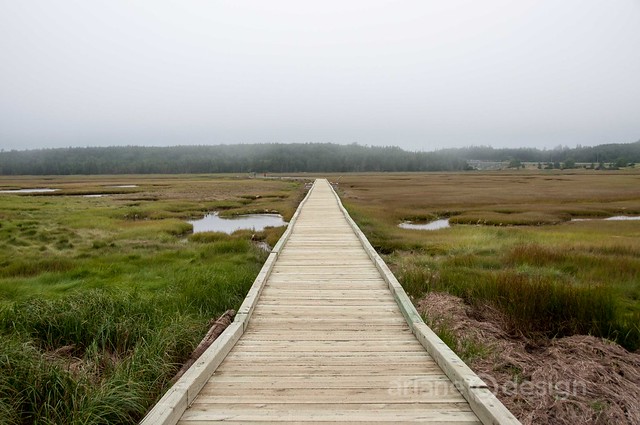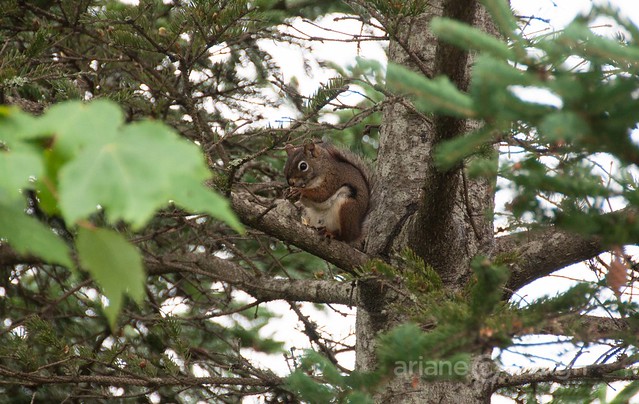The New Brunswick Museum captures visitors with three floors of history, art, virtual exhibitions, and geological findings. There’s also a real-time tides tower that’s connected to the tidal activity in the bay. The Bay of Fundy has the highest tides in the world!
We were greeted by a museum interpreter, who gave us a tour of the highlights as a museum of this size can easily fill an afternoon. Costumed staff help to liven the atmosphere by telling tales relating to life for industry workers who called the province home. The History Gallery follows the form of the Saint John River on the floor. As you wind your way around the ship building, woodworking, and fishing industries, there’s a wealth of beautiful displays and information to paint a picture of life back in the late 1700’s to early 1800’s.
The large exhibition rooms show the progression of New Brunswick’s industry, including a recreation of Sullivan’s Bar at the end of the first floor gallery. This former working man’s bar includes relics from a time when both temperance and prohibition were alive.

[Wallace Rupert Turnbull exhibit]
I was particularly moved by the aviation and apparel industries on display, right down to rolls of clothing company labels preserved through the decades. I later found out that this museum houses just a small percentage of the collection. Towards the outskirts of the city stands the museum’s former home, with an enormous repository of artifacts inside.
Wallace Rupert Turnbull (from Rothsay, New Brunswick) patented the first variable pitch propellor, revolutionizing air travel by allowing greater flight control. This curious inventor’s workspace is recreated here as well.
The shipbuilding area is also impressive. New Brunswick had a reputation in the 1800’s for its wooden sailing vessels. All manners of construction, tools, and process are gathered in this room, one large enough to contain enormous hulls and masts.
The ground floor is also home to the Hall of Great Whales. A collection of whale skeletons as well as life-size models of a Right Whale, Beluga, Humpback, Sperm Whale, Pygmy sperm whale and Minke Whale are all an awesome sight to see, simply for their sheer size and markings.
The upstairs gallery focuses on fossils, including Trilobites, a group of animals that lived on the ocean floor from about 540 to 250 million years ago. They’re named for the three lobes running the length of the body.
Over 370 species of birds have been recorded in the province; more than 200 are known to breed here. There’s a display inside a separate room, showing 116 species. The museum has the largest research collection of bird specimens in the Maritimes.
The third floor showcases art and textiles. In the mid 1930’s, Dr. Alice Lusk Webster started to collect artifacts from around around the globe to showcase creative developments throughout time. Through her tireless passion, she would make a vital contribution to the cultural life of the province as well as to this museum’s collection.
Here’s where you can also find New Brunswick’s treasured “The Death of General Wolfe” (1776) by James Barry.
The museum was founded by Abraham Gesner, the inventor of kerosene distilling. Gesner helped in the development of the modern petroleum industry, and was a member of the Natural History Society. The New Brunswick Museum is the oldest continuing museum in Canada. It’s resided at its current Market Square location since 1996.
Another connection with the New Brunswick Museum is the Stonehammer Geopark network. Several parks throughout the region are labeled Stonehammer Geoparks, as they offer geosites for visitors. This can be seen through some 60 geosites from the Fundy Trail Parkway to various rock formations at Irving Nature Park, and even closer, the reversing rapids at Fallsview Park in Saint John.
We headed out to watch the natural phenomenon occur as it does on a daily basis. The waters collide head on as they rush over the St. John River, creating an actual reversal visible from the park.
About 20,000 years ago, the entire Maritimes region was covered with glaciers. As the glaciers started to recede, they left behind a changed landscape, also leaving piles of sand and gravel (moraines) that damned the river outlet.
When the river found its new route about 14,000 years ago, it flowed over the rock ridges at Reversing Rapids to create a gorge. There was even a waterfall that existed at the time, but was drowned by sea levels rising and riverbeds eroding. Just past the bridge in the photo, the river bottom drops to about 25 metres below low water level, dropping again two more times to over 40 metres below low water level just past the bridge.
Jet boat tour companies offer a splashy ride through the rushing rapids created by the tidal action. An other option is to zip line your way across the action. There’s several areas under the bridge that show where two continents actually collided, shown in the photo above by the dark shadows in the rock.
Nearby Rockwood Park is one of Canada’s largest urban parks and a Stonehammer Geopark site. Its 890 hectares of Acadian mixed forest was designed by Calvert Vaux, one of the designers of New York’s Central Park.

[Charlie Gorman, 1926 World Speedskating Champion. Plaque located in Saint John’s King’s Square]
The World Speedskating Championships were held here in 1926, bringing in 25,000 fans. It contains over 10 freshwater lakes, a campground, an interpretation centre, 40-acre arboretum and Lily Lake Café, where we enjoyed hot drinks and dessert while vacationing families with kids were splashing into the water nearby.
We also briefly ventured out to Irving Nature Park, a 600 acre (243 hectare) park created by J.D. Irving, a family-owned paper pulp industry.
Mud flats and salt-marsh can be found in one area while a sandy beach is not far away along the pretty drive through the site. Irving Nature Park is recognized as having one of New Brunswick’s richest marine ecosystems, and it too is part of the Stonehammer Geopark network.
The area is home to sea urchins, harbour seals and porpoises, starfish, mussels, whelks, and other creatures of the sea.
Migratory birds also stop here en route between the Arctic and South America. I didn’t see any of these creatures, but we spotted a deer…and a chipmunk lazily picking away at a nut.
The New Brunswick Museum is located at Market Square in Saint John. My visit to the New Brunswick Museum was courtesy of Tourism New Brunswick.
All museum images in this article are courtesy of the New Brunswick Museum, Saint John, New Brunswick.


































